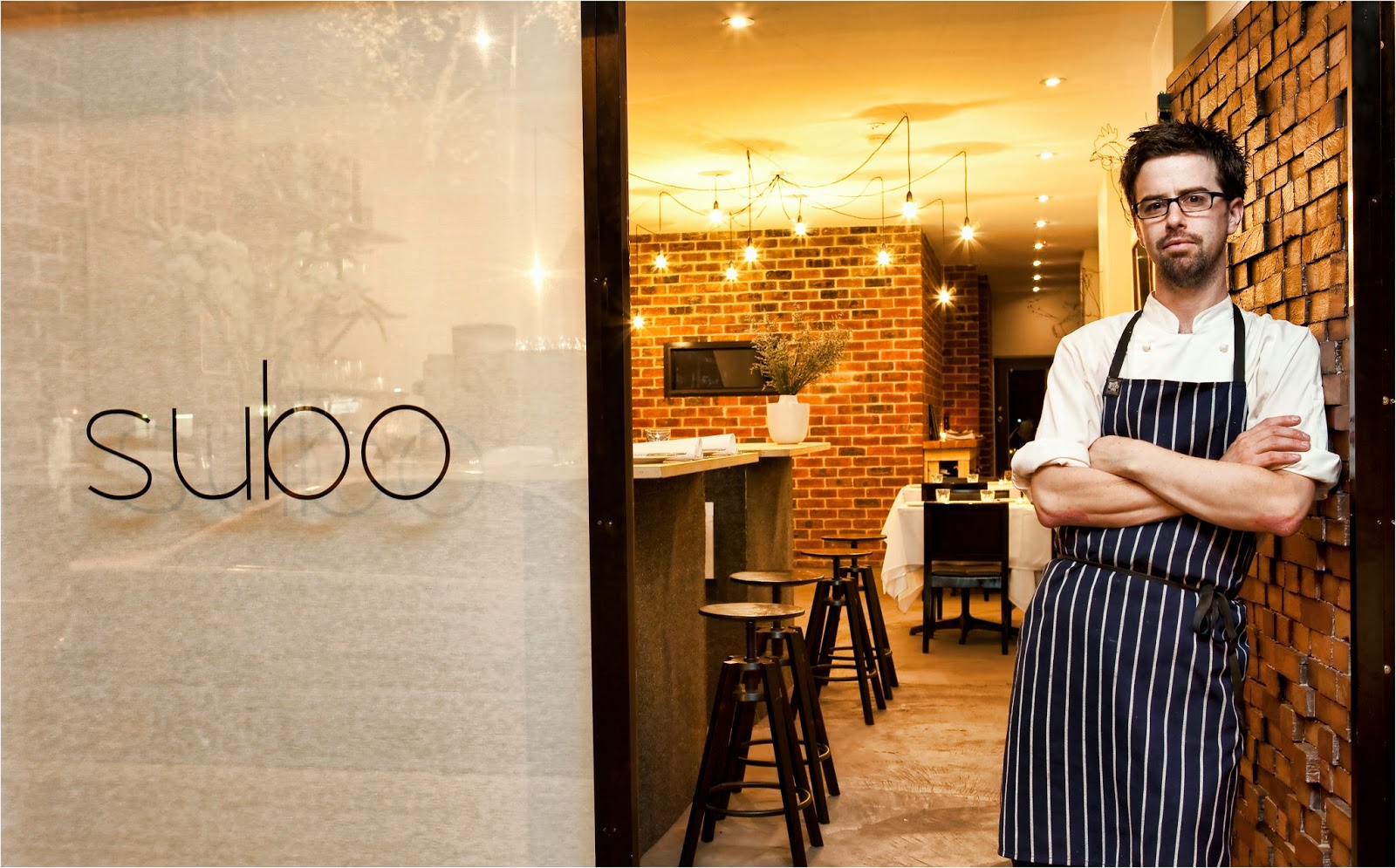It is only a few years ago that Tasmanians tended to hibernate during winter.
A glass of red wine, a wood fire, and nothing could budge them from their homes.
Over the last couple of years, however, thanks to events like Dark Mofo and the Huon Valley Mid-Winter Fest, islanders have started to embrace the cold and celebrate their point of difference.
Visitors to Tasmania this winter might be surprised by the number of events and festivals that are scheduled with 250 musicians and artists involved in Dark Mofo, the world's most recognised visual artist Marina Abramović opening at the Museum of Old and New Art (MONA) and cider-fuelled dress-ups circa the 1500s at the Huon Valley Mid-Winter Fest.
The winter festivities kicked off with the free 'Party in the Lane' in a little-known laneway in Hobart, Collins Court, on 1 May with a pop-up bar, live street art, music and a special menu curated by MONA's executive sous chef Vince Trim featuring a slow-cooked whole pig and lamb.
Dark Mofo 2015
A glass of red wine, a wood fire, and nothing could budge them from their homes.
Over the last couple of years, however, thanks to events like Dark Mofo and the Huon Valley Mid-Winter Fest, islanders have started to embrace the cold and celebrate their point of difference.
Visitors to Tasmania this winter might be surprised by the number of events and festivals that are scheduled with 250 musicians and artists involved in Dark Mofo, the world's most recognised visual artist Marina Abramović opening at the Museum of Old and New Art (MONA) and cider-fuelled dress-ups circa the 1500s at the Huon Valley Mid-Winter Fest.
The winter festivities kicked off with the free 'Party in the Lane' in a little-known laneway in Hobart, Collins Court, on 1 May with a pop-up bar, live street art, music and a special menu curated by MONA's executive sous chef Vince Trim featuring a slow-cooked whole pig and lamb.
Dark Mofo 2015
Dark Mofo, MONA's winter festival, celebrates ancient and contemporary mythology around the darkest night of the year. The festival opens on June 12 at Dark Park, the new festival HQ at Hobart's harbourside Macquarie Point, with large public artworks like the high-octane Fire Organ by German chemo-acoustic engineer Bastiaan Maris with producer Duckpond. Then there's the epic Wild At Heart road trip - a two-night, ballot only immersive art experience sleepover within Cradle Mountain-Lake St Clair National Park (June 15-17), and finishing with the Nude Solstice Swim on June 22 at the crack of dawn. Program information and tickets at www.darkmofo.net.au.
Festival of Voices
One of winter's hotly anticipated festivals, the Festival of Voices, returns for an 11th year, with an even hotter line-up of international and Australian voices. Held in Hobart from July 3-12, and for the first time in Launceston from July 14-16, the festival allows visitors to enjoy hands-on workshops with world-class conductors, be part of major choir recitals and explore the spoken word, a capella, gospel and cabaret across an eclectic range of venues. This year's festival will kick off with the ever-popular Bonfire & Big Sing at Hobart's Salamanca Place. Tickets available at www.festivalofvoices.com.
Marina Abramović Exhibition
It has taken performance artist Marina Abramović 17 years to return to Australia. Coinciding with the opening of Dark Mofo, from June 13 to October 5, MONA hosts a major exhibition of showing her early work with Ulay (a German artist Frank Uwe Laysiepen, her lover and collaborative partner from 1976 to 1988), as well as solo works exploring physical and mental limits, and more recent work where the public become the subject. www.mona.net.au.
What is wassailing? The pagan tradition of awakening the apple trees by banging pots and singing to them by firelight is alive and well during the Huon Valley Mid-Winter Fest at The Apple Shed. To really get into the action and be in the running for prizes, why not dress up in your best sixteenth-century 'Welsh Morris'-style costume? But if paganism isn't your thing, Friday night has been reserved for feasting - with the best local food, craft ciders, wine and fireside music. From July 17-19. Tickets available at www.huonvalleymidwinterfest.com.au.
Devonport Jazz Festival
From July 23-26 there will be jazz in halls, churches, pubs, clubs, cafes, vineyards, even jazz in a chocolate factory! Now in its 13th year, the Devonport Jazz Festival program features artists from Tasmania and interstate playing everything from gospel to blues. Tickets from www.devonportjazz.com.
Tasmanian Pinot Noir Showcase
A good pinot noir is notoriously hard for winemakers to produce and even harder sometimes for enthusiasts to find. The marriage between Tasmanian terroir and pinot noir grapes is made in heaven, with ideal growing conditions for the moody little fruit. Tasmania's best pinot noir producers join forces for the eighth annual Tasmanian Pinot Noir Showcase, held at Launceston's Pinot Shop on July 25. Bookings at www.pinotshop.com.
Latrobe Chocolate Winterfest
Latrobe on Tasmania's north-west coast hosts chocaholics on August 9 with tastings, a Community Lantern Parade and lots of hot chocolate. www.chocolatewinterfest.com.au.
For a full and up-to-date listing of Tasmanian events, and information on travelling to Tasmania, visit the Discover Tasmania website www.discovertasmania.com.au.
For a full and up-to-date listing of Tasmanian events, and information on travelling to Tasmania, visit the Discover Tasmania website www.discovertasmania.com.au.





























